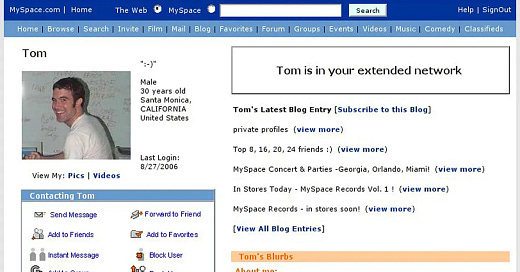MySpace: From Glitter-Filled Glory to Digital Ghost Town (2003-Present)
Before Instagram stories and TikTok trends, there was MySpace—a platform where your social worth was determined by your Top 8 and your ability to embed a glitter GIF without crashing your page.
The Birth of MySpace: When HTML and Glitter Collided
The internet is moving out of its awkward chatroom phase and into a slightly more cooler—but no less chaotic—era. Enter MySpace, a platform that didn’t just give you a profile to share your life; it let you customize it with auto-playing emo anthems, flashing GIFs, and cryptic status updates that screamed, "“I’m not mad, but I’m definitely mad.” It gave you an entire stage. Want to be mysterious? Set your page song to "Boulevard of Broken Dreams" and post cryptic bulletins about “fake friends.” Want to flex your coding skills? Spend six hours embedding a glittery cursor and autoplaying Fall Out Boy on loop.
Created by Tom Anderson (yes, that Tom) and Chris DeWolfe, MySpace was more than a website—it was a cultural reset. It wasn’t just about connecting with friends; it was about showing off. Your profile wasn’t just a page—it was a statement. For the first time, your online presence wasn’t limited to a username; it was an entire digital persona, complete with mood-setting music, a meticulously curated Top 8, and a layout so loud it could crash your grandma’s dial-up connection. Your Top 8 wasn’t just a list—it was a power play. And don’t even get us started on the drama of removing someone from your Top 8. Friendship-ending stuff.
But with great customization came even greater drama. MySpace wasn’t just a platform for self-expression; it was a battleground for attention, validation, and sometimes, all-out war.
Keep reading with a 7-day free trial
Subscribe to Allegedly Evident to keep reading this post and get 7 days of free access to the full post archives.



